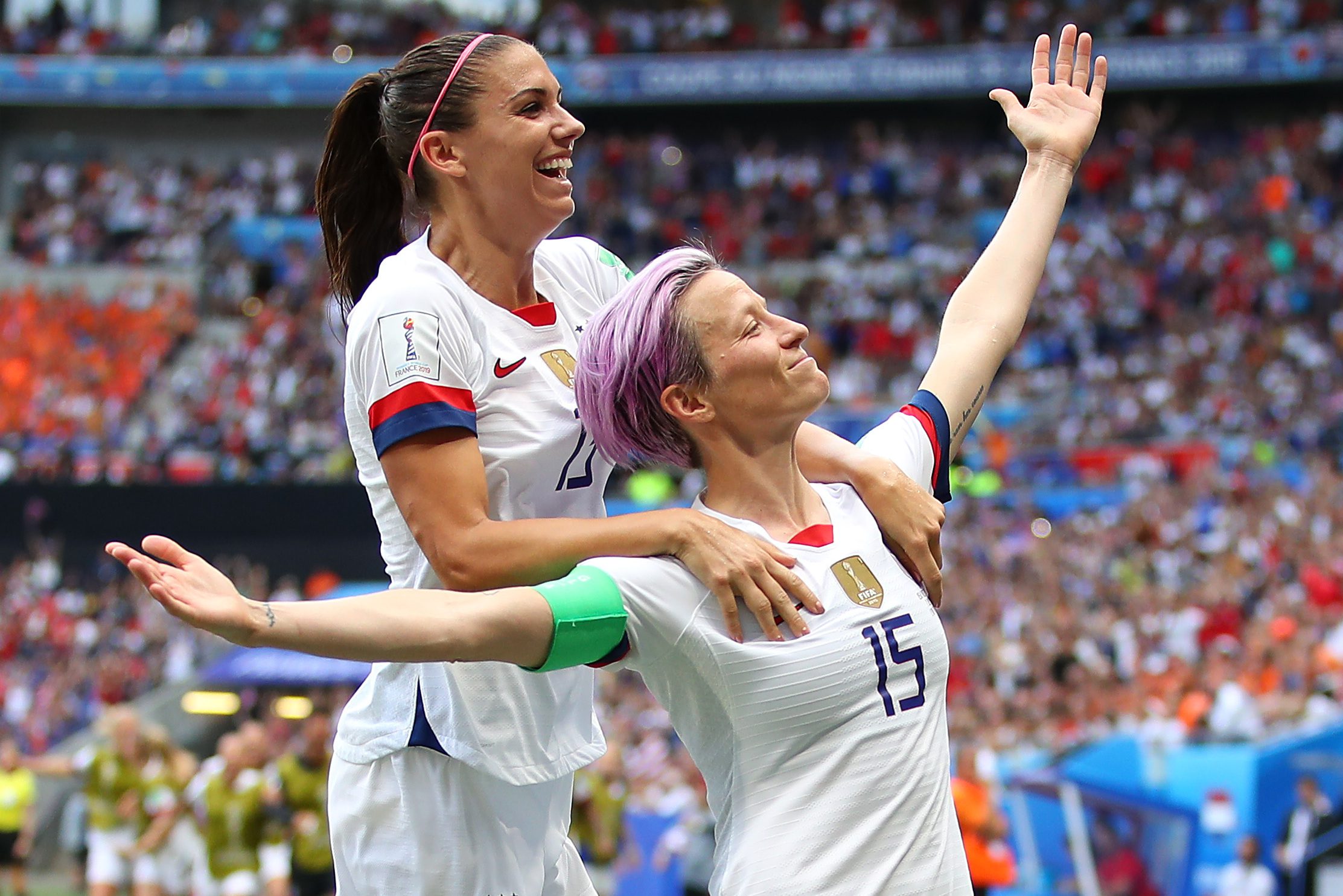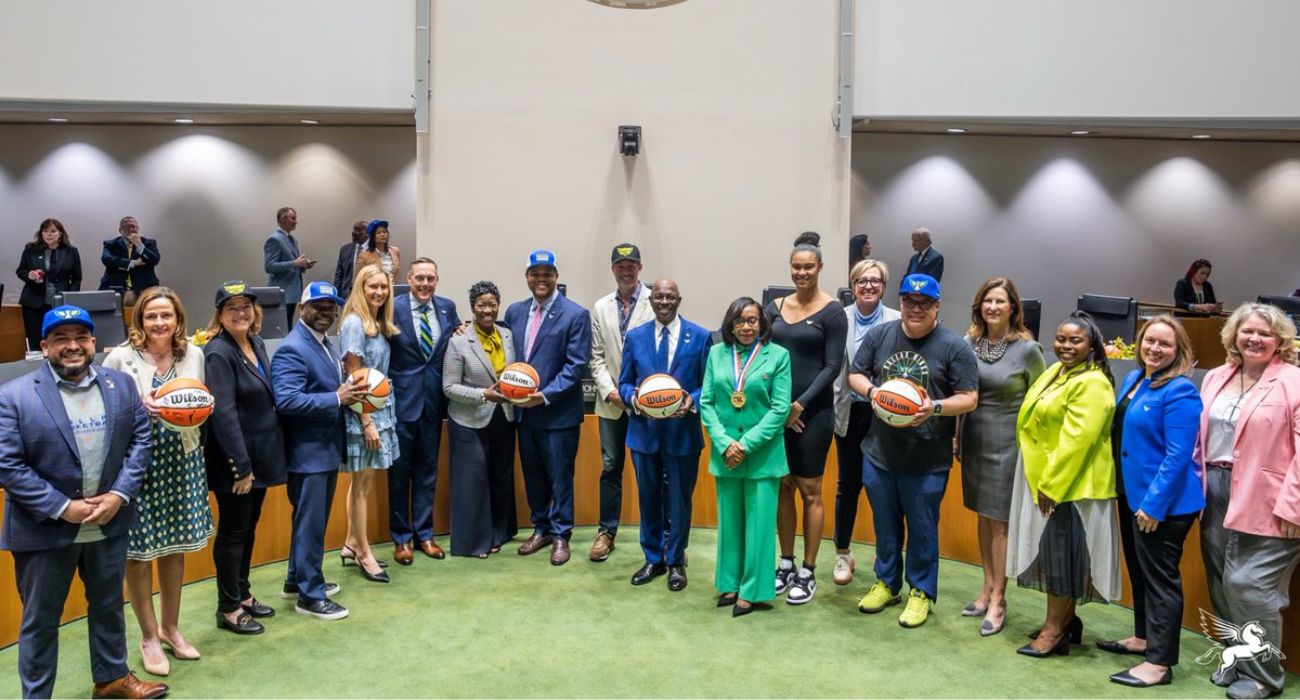The U.S. Women’s National Team (USWNT) soccer players have agreed to settle their historic equal pay lawsuit against the U.S. Soccer Federation (USSF) for $24 million. As part of the settlement, the USSF has agreed to equalize the pay and bonuses between the women’s and men’s teams “in all friendlies and tournaments, including the World Cup.”
The legal battle began in April 2016 when five players, including Megan Rapinoe, Becky Sauerbrunn, and Alex Morgan, filed a complaint with the federal Equal Employment Opportunity Commission. In 2019, all 28 Women’s National Team players filed a lawsuit initially seeking more than $66 million in damages under the federal Equal Pay Act and Title VII of the Civil Rights Act.
The two sides announced the settlement early Tuesday, February 22, for less than half of the initial amount sought. The USSF also agreed to use $2 million from the settlement to create a fund to benefit charities that focus on expanding women’s soccer and helping female players in their post-soccer careers. Each player can apply for up to $50,000 from this fund.
The USSF’s agreement to equalize the pay and bonuses, including World Cup bonuses, for women’s players, essentially closes the 2019 lawsuit.
“I think we’re going to look back on this moment and just think, ‘Wow, what an incredible turning point in the history of U.S. Soccer that changed the game and changed the world, really, forever,'” Rapinoe said.
The settlement represents a monumental win for the women’s players, as well as their fans, who chanted “Equal Pay!” when the team won its second consecutive World Cup title in France in 2019.
“I just think it’s so difficult sometimes to talk about and to articulate the kind of discrimination, abuse, inequity, and disrespect that so many women feel so often in their job,” Rapinoe said. “And I think we were able to start to put a voice to that, put a face to it, put talking points to it and put a sort of movement behind it.”
The players will split the settled amount individually, subject to the District Court’s approval.
The agreement was also an accomplishment for Women’s Soccer Federation President Cindy Parlow Cone, a former player. She became president of the federation in March 2020, taking the place of Carlos Cordeiro. Cordeiro resigned after the federation made a legal filing in the case that argued women had less physical ability and responsibility than their male counterparts.
“Now we can start to work with the players in growing this game because, not only are they the best players in the world, they’re the best ambassadors for our sport,” Cone said. “I’m so glad we got this done. And I’m so looking forward to just working together and turning the page.
Cone told the Associated Press that the way World Cup bonuses will be equalized is yet to be determined.
In the past, the USSF has based the amount of World Cup bonuses given to men and women on FIFA’s amount. In the 2018 men’s World Cup, FIFA provided $400 million in bonuses, including $38 million for champion France. In the women’s edition of the tournament in 2019, FIFA provided $38 million in bonuses and just $4 million to champion U.S.
“Until FIFA equalizes it themselves, we need both the men’s [union] and the women’s [union] to come together with U.S. Soccer to find a solution to equalize it,” Cone said.
In addition to FIFA bonuses’ inequality, USSF bonuses have also been awarded unequally.
Men’s players received a $67,000 bonus for making a World Cup roster, while women’s players received $37,500. When the men’s team defeats a team ranked outside the Top 25 in the FIFA rankings, each player gets a $9,375 bonus, while a loss would net each player $5,000. Meanwhile, when the women’s team defeats a team ranked outside the top eight, each player receives a $5,250 bonus whereas a loss earns no bonus at all.
Winning the World Cup, which the men’s team has never done, would net each male player a $407,608 bonus. In contrast, women’s players receive $110,000 for a World Cup title.
“Every generation has taken on that fight to close the gap, and every generation has left this program better for that fight, and we as the current players are thrilled that this fight has led to the closing of that gap,” Sauerbrunn said. “There are a lot of on-field accomplishments like World Cups and Olympics, league championships, but this will really stand out as one of the most meaningful moments.”
The USWNT has won four World Cups since the program’s creation in 1985. Their male counterparts have not reached a World Cup semifinal since 1930.
“For our generation, knowing that we’re going to leave the game in an exponentially better place than when we found it is everything,” Rapinoe added. “That’s what it’s all about because, to be honest, there is no justice in all of this if we don’t make sure it never happens again.”
The U.S. Women’s National Team was at Toyota Stadium in Frisco on February 23, where they beat the Iceland Women’s Team 5-0, winning their third consecutive SheBelieves Women’s Cup title.
“It’s really been incredible to stand alongside all these women on the national team and feel like we are making a difference, not only for ourselves but for the next generation, for the women we stand alongside across sport and workforces,” Morgan said. “I feel like it’s just been exponentially bigger than I could have ever anticipated, in a good way.”






